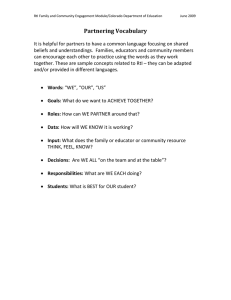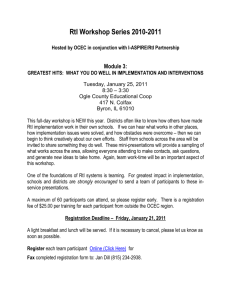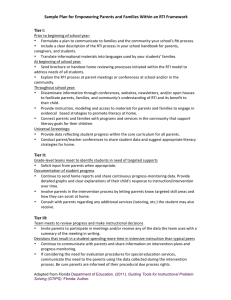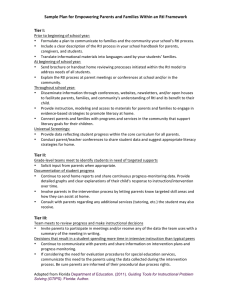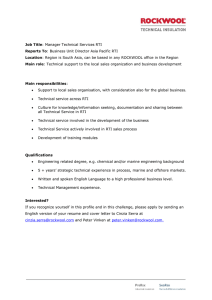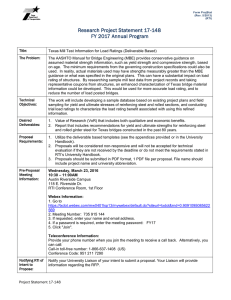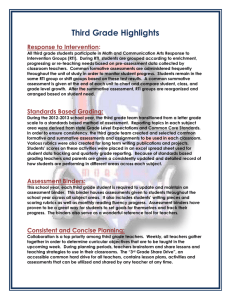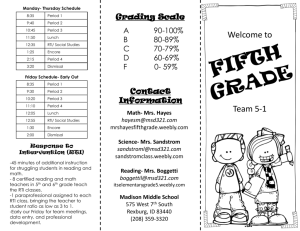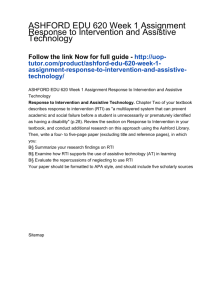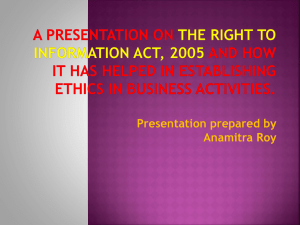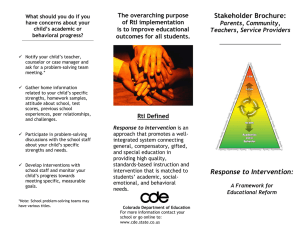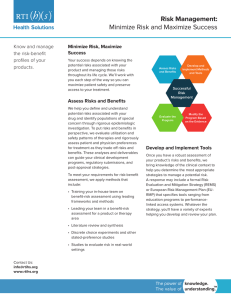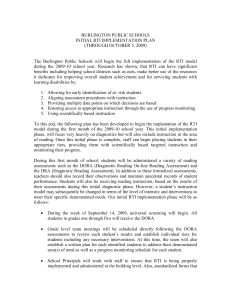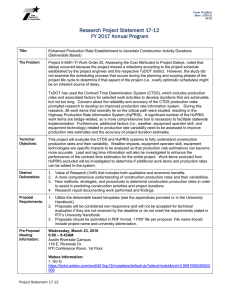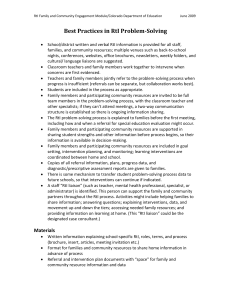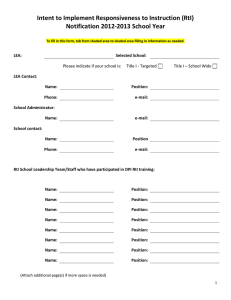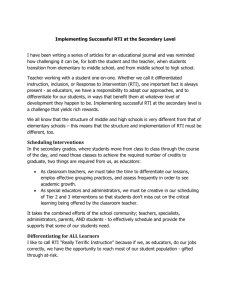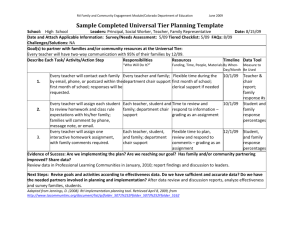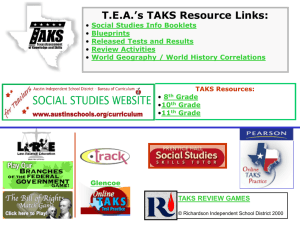RTI Debriefing
advertisement
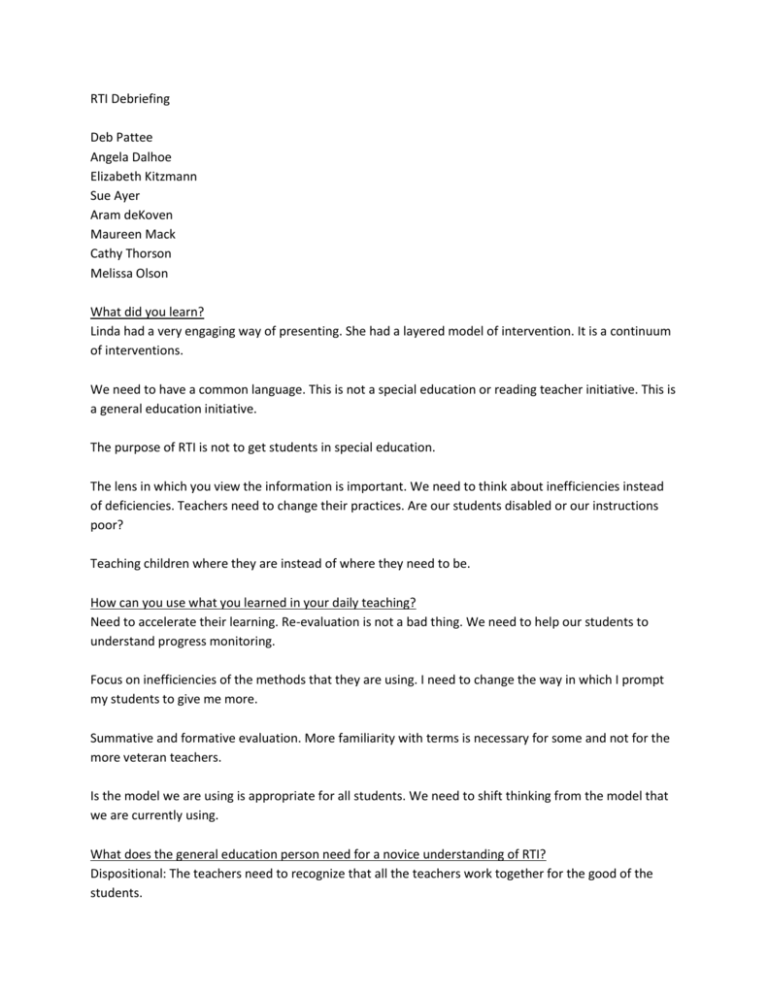
RTI Debriefing Deb Pattee Angela Dalhoe Elizabeth Kitzmann Sue Ayer Aram deKoven Maureen Mack Cathy Thorson Melissa Olson What did you learn? Linda had a very engaging way of presenting. She had a layered model of intervention. It is a continuum of interventions. We need to have a common language. This is not a special education or reading teacher initiative. This is a general education initiative. The purpose of RTI is not to get students in special education. The lens in which you view the information is important. We need to think about inefficiencies instead of deficiencies. Teachers need to change their practices. Are our students disabled or our instructions poor? Teaching children where they are instead of where they need to be. How can you use what you learned in your daily teaching? Need to accelerate their learning. Re-evaluation is not a bad thing. We need to help our students to understand progress monitoring. Focus on inefficiencies of the methods that they are using. I need to change the way in which I prompt my students to give me more. Summative and formative evaluation. More familiarity with terms is necessary for some and not for the more veteran teachers. Is the model we are using is appropriate for all students. We need to shift thinking from the model that we are currently using. What does the general education person need for a novice understanding of RTI? Dispositional: The teachers need to recognize that all the teachers work together for the good of the students. What is equity in education. Equity is access and opportunity. Definition of terms. Teachers are operating in a crisis cultural mode. Model of how this can look. How do they get that is an everyday schedule? When do we pull them out of the day so that they can get more. What is the best practice for all students? Teacher hypothetically; what is my responsibility as a teacher? Vision statement of inclusion: activity read and reflect. Change in terms. Universal screening.
